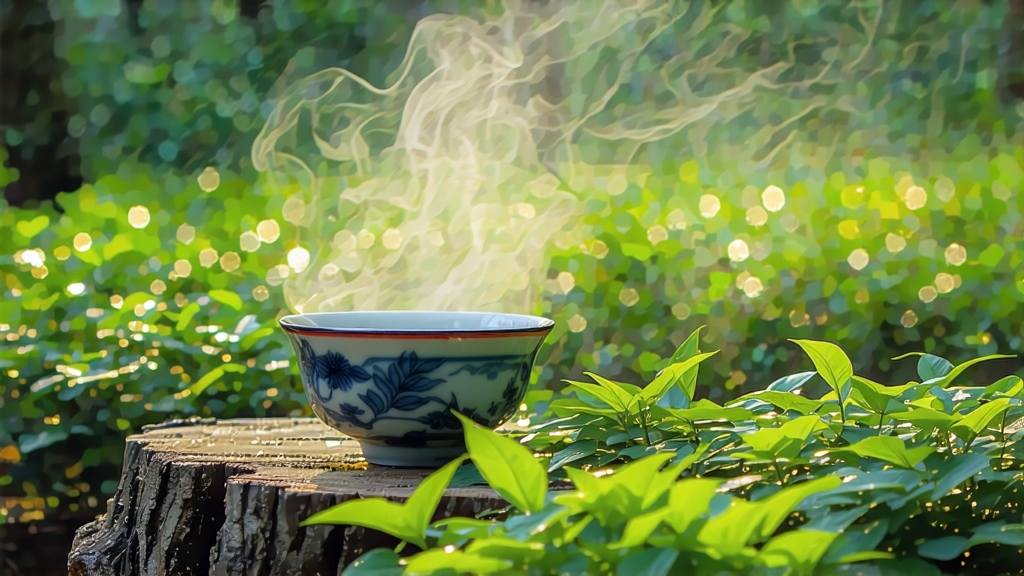
Alishan High-Mountain Oolong is not merely a tea; it is a vertical journey above the Tropic of Cancer. Grown between 1,000 and 1,400 m on the forested spine of Taiwan’s Chiayi County, these plants wake every morning inside a cloud. The cool, thin air slows photosynthesis, thickening leaf cuticles and concentrating amino acids that later translate into an almost milky sweetness. To international drinkers who know only the dark roasted oolongs of Chinatown menus, Alishan offers a revelation: a liquor the color of pale chardonnay, aromatics that oscillate between white orchid and whipped cream, and a finish that lingers like a violin harmonic.
History: From Refuge to Royalty
Oolong itself was born in Fujian during the Ming dynasty, but Alishan’s story begins in 1855, when Lin Feng-shan, a general of the Qing garrison, smuggled Qing Xin saplings over the Taiwan Strait. The cultivar found its soul in the island’s misty interior, yet remained an obscure mountain crop until 1980, when Taiwan’s Tea Research and Extension Station released a lightly oxidized, minimally roasted style to compete with the rising fashion for green tea in Japan and the West. Within a decade, Alishan became the flagship of Taiwan’s “high-mountain” (gaoshan) movement, commanding prices that outstrip many Grand Crus.
Terroir: Where Clouds Prune the Leaves
The Alishan range is a lifted fault block of ancient sandstone and shale, acidic and fast-draining. Night temperatures can drop 15 °C below daytime highs, forcing the bush to produce more sucrose and catechins as natural antifreeze. Ultraviolet intensity at altitude boosts terpene synthesis, gifting the leaf its signature alpine perfume. Indigenous cinnamon and Formosan cypress exhale into the same fog that hydrates the tea, adding a subtle resinous note detectable to practiced palates.
Cultivar: Qing Xin, the Green Heart
Qing Xin (literally “green heart”) is a slow-growing, small-leaf bush with erect branches—ideal for hand-plucking two leaves and a bud. Its chlorophyll-rich foliage ferments reluctantly, giving the tea master a wider window to sculpt flavor. While Jin Xuan (milk oolong) is sometimes planted at lower elevations, true Alishan must be Qing Xin; only this cultivar can translate mountain air into cup aroma.
Harvest Calendar: Spring vs. Winter
Spring plucking runs from late March to early May, depending on altitude. The emerging leaves contain 4–5 % amino acids, yielding a creamy texture. Winter harvest, mid-October to November, offers thinner liquor but higher aromatics—think alpine flowers after frost. Connoisseurs often cellar a pound of each, comparing how six months of vacuum-sealed rest softens astringency and amplifies “mountain qi.”
Craft: The Rhythm of Oxidation
Within minutes of plucking, the leaves are solar-withered on large bamboo trays set under filtered morning sun. This “soft sunbath” reduces grassy volatiles and initiates enzymatic oxidation. Next comes indoor withering on wire racks, where conditioned air (22 °C, 65 % RH) coaxes moisture from the stem. The pivotal step is rocking: 8–12 rounds of tossing in a cylindrical bamboo drum, each lasting 30–90 s. Edge bruising turns the leaf rim a rusty copper while the vein stays emerald—evidence of the 20–30 % oxidation that defines modern Alishan.
Kill-Green: Arresting Time
A 260 °C drum roaster halts oxidation in 3 min, locking in the floral spectrum. Traditional oolongs might endure a second roast, but Alishan is baked only once, at 90 °C for 2 h, to reduce residual moisture to 3 %. The result is a “living” tea that will slowly evolve in the tin, rather than a heavily charred leaf whose story ends at the factory.
Rolling: From Leaf to Marble
While still warm, the leaves are wrapped in cotton cloth and compressed into a ball-rolling machine that rotates 60 times per minute. Pressure is applied in pulses—30 s on, 10 s off—for 45 min. This laborious cycle ruptures cell walls, allowing sap to coat the exterior and giving Alishan its iconic半球形 (hemispherical) shape. When dropped on porcelain, a well-